Albanian Diocese-Ecumenical Patriarchate
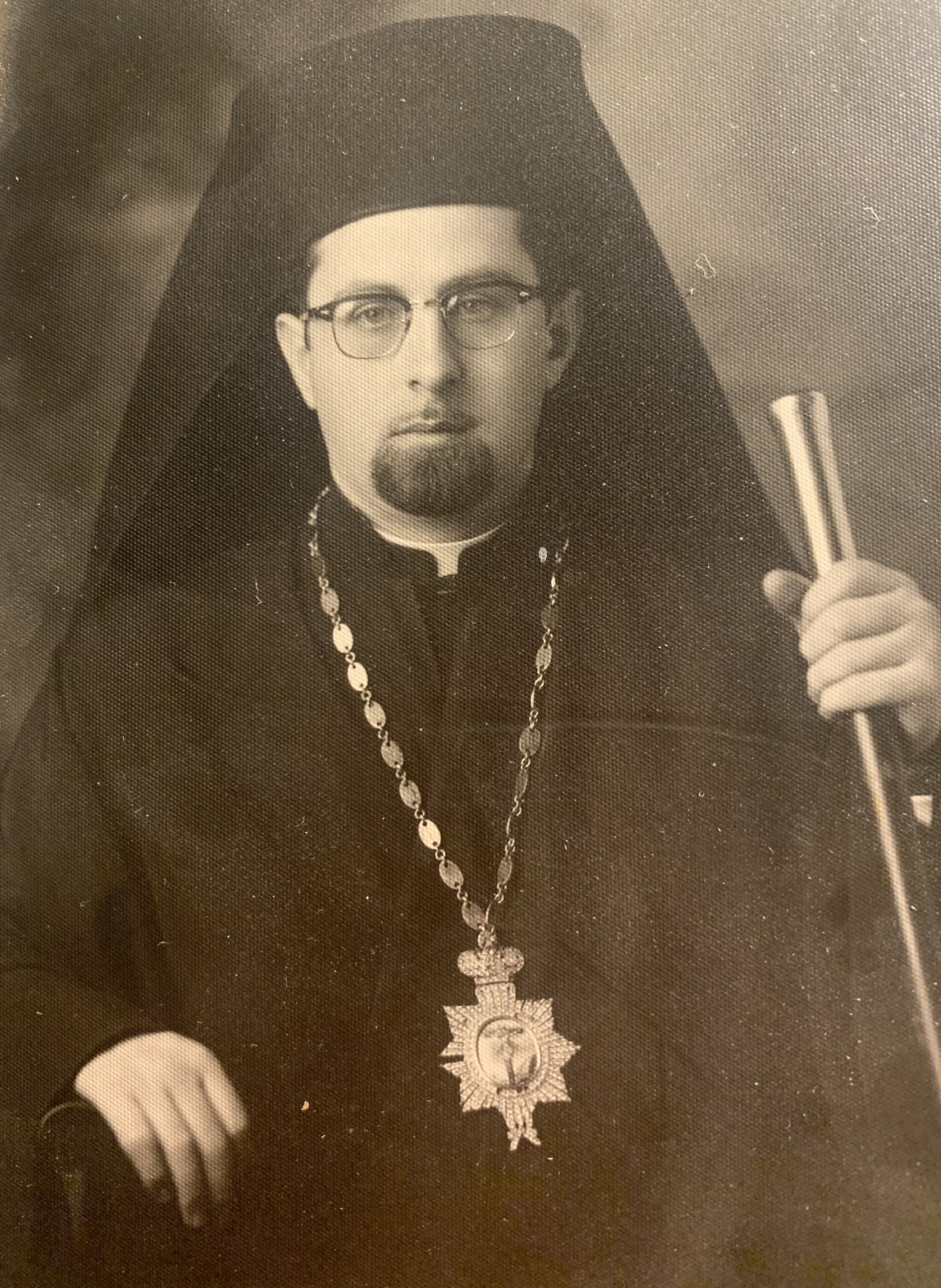
Our Albanian Diocese was established in 1950 by Bishop +MARK of Lefkis, as a canonical jurisdiction under the Ecumenical Patriarchate and independent of the Autocephalous Orthodox Church of Albania.
Bishop +MARK Lipa was a native of Korçë, Albania. After completing his studies in the Lycee of Korçë, the late and illustrious Archbishop of the Albanian Autocephalous Church, His Eminence +KRISTOFOR Kisi, having discovered young Mark's religious and ecclesiastical inclination from childhood, decided to send him to the Theological School of Halki in Constantinople, for the proper education in Orthodox Christian theology and with the purpose that someday Mark would return to his native homeland to serve the Autocephalous Orthodox Church of Albania.
With God's help and the moral and financial support of the blessed Archbishop +KRISOTOFOR, Mark’s dreams began to be realized. Since childhood, religious and church life had influenced him a great deal. He studied at the School of Halki for seven years.
Unfortunately, in 1944, after he had completed his theological training, the Communists seized Albania, and Mark was unable to return. Yet he harbored great hopes that one day his country would be free, and his return would be made possible. Naturally time passed and Albania remained under Communist occupation and free travel was prohibited. So, in 1949, at the end of World War II, Mark received a letter from a friend in America, whom he had met in Korçë. In this letter, his friend told him of the desire of an honorable group of Albanians in Boston that Mark should come to America as Bishop for the Albanian Orthodox faithful in America.
By his own admission, Mark's knowledge of the whole situation of the Albanian Church in America was scant and at the outset things looked rather apprehensive. After taking some time to consider the proposal, Mark replied that he accepted with pleasure their request to come to America as a Bishop. At once, the Boston group visited His All-Holiness, Ecumenical Patriarch +ATHENAGORAS, who was in America. They explained to His Holiness the whole situation of the Albanian Church in America. Moreover, they entreated him to ordain Mark as a Bishop upon His Holiness’ arrival in Istanbul. To their request, the Patriarch responded, “… when I go to Istanbul, I will know better this person that you request me to ordain as your Bishop and in the case that he is worthy to assume this great responsibility I shall at once fulfill your request by sending him to you as Bishop.”
Bishop +MARK was duly elected by canonical bishops of the Holy Synod of the Mother Church of Constantinople, in regular session and presided over by His All-Holiness, Ecumenical Patriarch +ATHENAGORAS. The election, in accordance with canon law, took place at the Patriarchal Church of Saint George, on August 31, 1950. Bishop +MARK was then canonically consecrated according to the liturgical service of ordination in the Orthodox Church, by the Ecumenical Patriarch of Constantinople on September 10, 1950.
Upon Bishop +MARK’s arrival in this country, a great controversy developed. Some politicized Albanians did not give Bishop +MARK the opportunity to introduce himself. Instead, they prejudiced the minds of many of the faithful Orthodox against him with claims that the Ecumenical Patriarchate had sent Bishop +MARK to America for reasons of propaganda. These and other accusations parroted the official narrative out of Tirana, specifically from Pasko Vodica, the uncanonical archbishop installed by the Communist Government of Albania after the arrest, and eventual poisoning, of the canonical Archbishop +KRISTOFOR.
Bishop +MARK was attacked most viciously by persons unknown and known, insiders and outsiders, notwithstanding the pure motives of that aforementioned group of Boston Albanians that had brought him to the United States. The Albanian Orthodox Diocese was established and recognized by the other canonical Orthodox Churches, as an Albanian Church independent of the Autocephalous Orthodox Church of Albania.
Under Bishop +MARK's tireless spiritual direction, our Diocese sponsored for decades a weekly radio broadcast called "Voice of Orthodoxy" (Zerin e Orthodhoksisë) in Boston, as well as a monthly newspaper titled "The True Light" (Drita e Vërtetë). These two media of great importance transmitted the message of Christian Orthodoxy to Albanian-Americans spread out throughout the American landscape. Moreover, those newscasts and publications became holy weapons against the dark forces of the devil at work against Christ's Holy Church and were readily disseminated among the oppressed faithful struggling under Communist persecution in the Homeland, inspiring hope and maintaining the spark of faith alive in them. May the memory of Bishop +MARK be eternal.
Orthodox Autocephalous Church of Albania
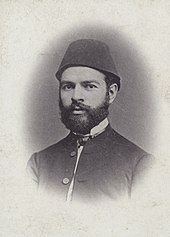 Shortly after the outbreak of the first Balkan war in October 1912, in which the Balkan League, made up of Bulgaria, Serbia, Greece, and Montenegro, was at war against the Ottoman Empire. Albanian Patriots, under the leadership of Ishmael Qamal, declared Albania an independent nation. The date was November 28, 1912. This ushered in an extended period of internal unrest, political instability, and the breakdown of longstanding structures which had been supported under the Ottoman rule. In the midst of this tumult, the Orthodox Church faced a new set of circumstances now influenced and pressured by politically motivated interests.
Shortly after the outbreak of the first Balkan war in October 1912, in which the Balkan League, made up of Bulgaria, Serbia, Greece, and Montenegro, was at war against the Ottoman Empire. Albanian Patriots, under the leadership of Ishmael Qamal, declared Albania an independent nation. The date was November 28, 1912. This ushered in an extended period of internal unrest, political instability, and the breakdown of longstanding structures which had been supported under the Ottoman rule. In the midst of this tumult, the Orthodox Church faced a new set of circumstances now influenced and pressured by politically motivated interests.
Prior to independence, the Church in Albania was organized under the Ecumenical Patriarchate according to the millet system imposed by the Ottoman Porte. Bishops were dispatched to Albanian lands, where they protected the religious rights of the people in accordance with time honored prerogatives granted by the Sublime Porte to the Ecumenical Patriarchate of Constantinople. Exercising these prerogatives, the various bishops decided on matters of disputes among Christians such as issues of property inheritance and marriage. Moreover, the bishops defended the Orthodox Christians' identity as a minority population and their right to education, freedom of religious practice and judicial appeal. During this period, all Orthodox Christians, or members of the rum millet, were educated in Greek-speaking schools and worshiped at Greek-language liturgical services.
The independence of Albania was formalized by the Treaty of London on May 30, 1913, when a decision was made to appoint an international commission of control for Albania to organize the government and supervise its operation. With the emergence of a more pronounced Albanian nationalism, voices were raised for the organization of an independent Church to parallel political developments. It was not until 1921 that the Albanian language was used for the first time in Korçë at divine services, whereas Albanian translations of liturgical texts had already been prepared and used by then-priest Theophan Noli in Boston in 1908. In August of 1921 the last remaining hierarch of the patriarch aid was expelled by the Albanian government, resulting in a chaotic and anti-Canonical situation for the Church.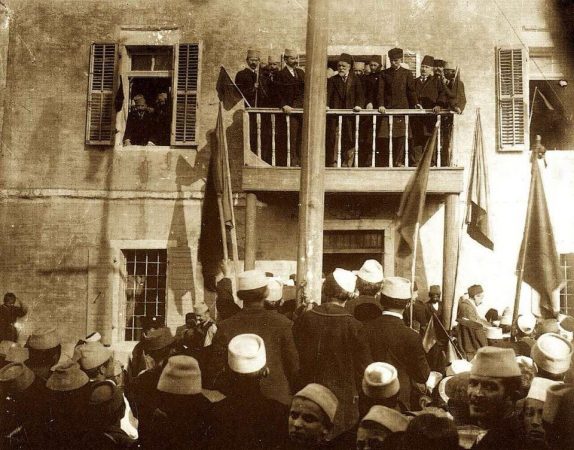
An all Albanian Congress was called at Berat in August 1922, to resolve the anomalous conditions and seek a permanent solution. The representatives, clergy and laity, adopted a resolution calling for the establishment of an autocephalous or self-governing Church, with bishops being citizens of Albania ordained by the Ecumenical Patriarchate and with the official language of the services being Albanian. The delegation led by the priest, Reverend Vasil Marko, took this resolution of the Congress of Berat to the Patriarchate.
In response to two Albanian hierarchs, Bishop +HIEROTHEOS Andon, a native of Charshova, Leskovik, and Bishop +KRISTOFOR Kissi, born in Berat in 1882, were sent to Albania to study the situation and prepare a report. Instead, Bishop +HIEROTHEOS, as patriarchal exarch, became entangled in the political maneuvers of the government and proceeded to ordain +THEOFAN Noli a bishop. The situation became convoluted when he named himself Bishop of Korçë and locum tenans of Gjirokastër, Bishop +KRISTOFOR to Berat and Bishop +THEOFAN to Durrës and Tirana. Following his six months as Prime Minister (June 17 to December 24, 1924), Bishop +THEOFAN departed Albania and severed his ties with the Church there. He never returned to Albania. Bishop +HIEROTHEOS became embroiled in contradictions with the ever changing government authorities and finally was asked to leave the country. He retired to Mount Athos and died in a Salonika hospital in 1956.
Archbishop +KRISTOFOR, a Martyr for Christ
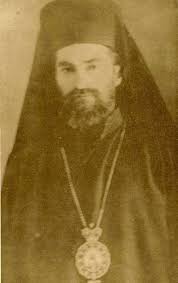
The lone remaining bishop, who maintained amicable relations with the Ecumenical Patriachate, was Bishop +KRISTOFOR Kissi. He attempted to strike an agreement with the government on a list of electable bishops, but to no avail. He too was requested to leave the country but refused on the pretext that he had no hospitable recourse. It was agreed that he would remain and retire to the monastery at Ardenica.
With Bishop +KRISTOFOR out of the way, the Church fell under the complete control of the government which sought partisan candidates such as Elbasan-born priest, Vissarion Juvani, who would organize along political lines and cooperate with the government. Father Vissarion was ordained to the episcopate for the Russian Orthodox Synod in Exile, becoming Bishop +VISSARION. Together with Serbian Bishop +VICTOR, he ordained bishops +EUTHYMIUS and +AGATHANGEL, the latter having served as a priest in the United States. However, this group of bishops remained isolated and out of canonical communion with other Orthodox bishops. Bishop +VISSARION, with the backing of the government, dismissed Bishop +VICTOR, who retired to Serbia. Bishop +EUTHYMIUS died, and Bishop +AGATHANGEL withdrew his support of Bishop +VISSARION, which prompted a church assembly and the government's call for his resignation. He left active ministry in 1936 and lived in retirement until his death in 1959.
It fell to Bishop +KRISTOFOR to take up the mantle of leadership. Convincing the government of King Zog, Bishop +KRISTOFOR undertook the task of correcting the anomalous church situation by being reconciled to the Mother Church of Constantinople and, through the Ecumenical Patriarch, to establish canonical relations of mutual recognition with all the other Patriarchates and Autocephalous Churches of the Orthodox world.
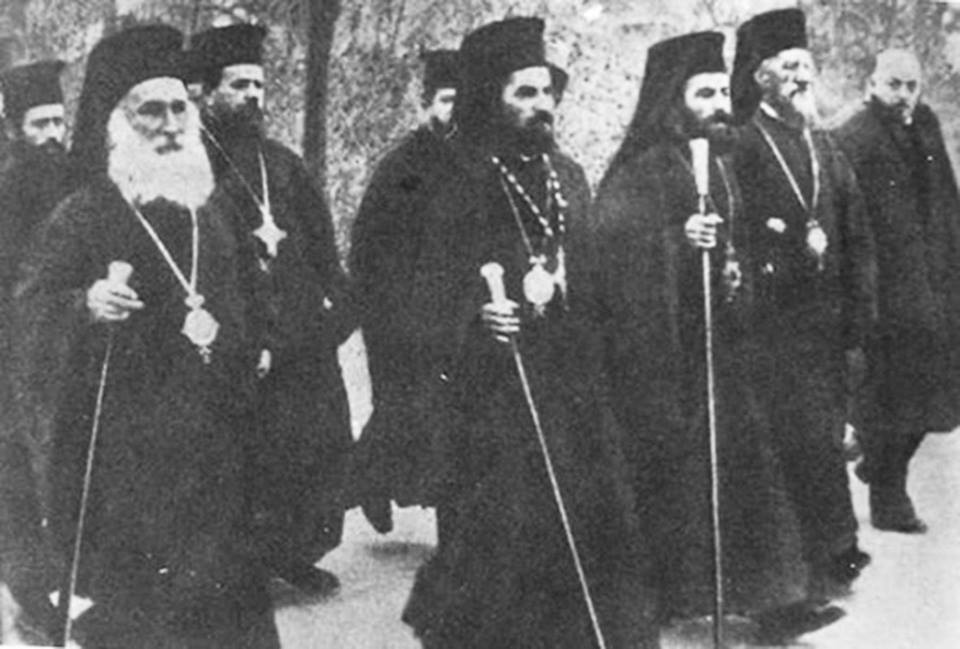
On April 12, 1937, the Holy and Sacred Synod of Mother Church of Constantinople issued the Tomos of autocephaly over the signatures of then-Ecumenical Patriarch +BENJAMIN and the eleven metropolitans comprising the Sacred and Holy Synod of Constantinople. On the same day, the Synod elected and founded the canonical Holy Synod of the Church of Albania, consisting of: Archbishop +KRISTOFOR of Tirana, Durrës, and All Albania; Bishop +AGATHANGEL of Berat; Bishop of +EVLOGI of Korçë; and Bishop +PANDELIMON of Gjirokastër.
The members of this Synod were disesteemed by the government in Albania during and after World War II. Bishop +AGATHANGEL died in 1946. Bishops +EVLOGI and +PANDELIMON were barred from reentering the country, and Archbishop +KRISTOFOR was deposed in 1949 as being unacceptable to the government. He was poisoned by the Communist regime and died on June 16th, 1958, while confined to the monastery of Saint Prokopios.
A churchman of the first order, Archbishop +KRISTOFOR guided the church through difficult and critical times, keeping faith with church order and tradition at the expense of his own safety and reputation. His contribution to regularizing and establishing the Orthodox Autocephalous Church of Albania is inestimable. His insistence on correct ecclesiastical order and procedure procured the gift and dignity of autocephaly which is cherished by the Church all these many decades later.
Through the prayers of Archbishop +KRISTOFOR, may the Holy Trinity fortify the Orthodox Christian faithful everywhere.
Under Communist Persecutions
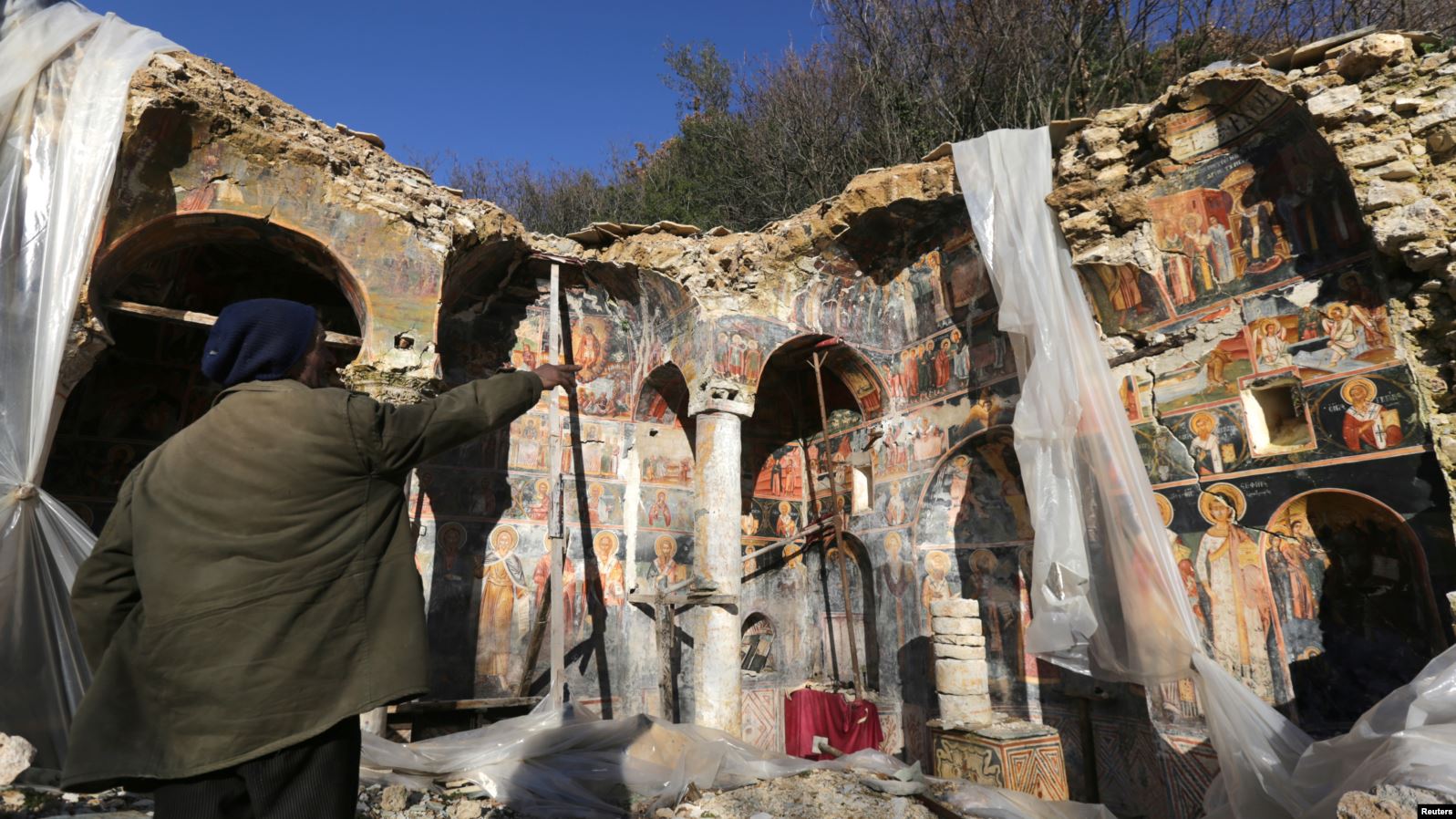 The years of fascism and communism were thorny ones for the Church. Barely was there enough time to organize and stabilize church life when the upheavals of World War II and its aftermath gripped Albania. The government dictated the policies of the Church and handpicked its leaders. The period from 1949 onwards saw gross violations of common law, faith regulations, and practices. A string of bishops who were government appointees served, not the interests of the church, but the state. They compromised the Church to the point that, in 1967, all churches and religious centers were closed and religious freedom curtailed. The state described itself as atheist.
The years of fascism and communism were thorny ones for the Church. Barely was there enough time to organize and stabilize church life when the upheavals of World War II and its aftermath gripped Albania. The government dictated the policies of the Church and handpicked its leaders. The period from 1949 onwards saw gross violations of common law, faith regulations, and practices. A string of bishops who were government appointees served, not the interests of the church, but the state. They compromised the Church to the point that, in 1967, all churches and religious centers were closed and religious freedom curtailed. The state described itself as atheist.
 In 1992, the open practice of religion was restored in Albania. Archbishop +ANASTASI, the patriarchal exarch, arrived and set about reorganizing and reinstituting the Church in accordance with the Tomos of 1937 issued by the Ecumenical Patriarch, which is the cornerstone of that Church's autocephaly today. The Holy Synod of the Church of Albania was created with the help of the Ecumenical Patriarchate in 1998, and statutes were adopted in 2006. After prudent negotiations with the government of the Republic of Albania, an agreement was reached in which the Church is recognized as a legal entity.
In 1992, the open practice of religion was restored in Albania. Archbishop +ANASTASI, the patriarchal exarch, arrived and set about reorganizing and reinstituting the Church in accordance with the Tomos of 1937 issued by the Ecumenical Patriarch, which is the cornerstone of that Church's autocephaly today. The Holy Synod of the Church of Albania was created with the help of the Ecumenical Patriarchate in 1998, and statutes were adopted in 2006. After prudent negotiations with the government of the Republic of Albania, an agreement was reached in which the Church is recognized as a legal entity.


